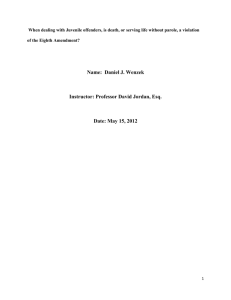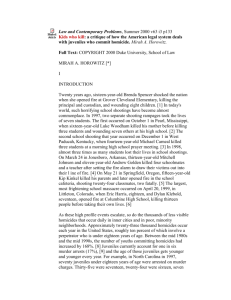In Re Kevin Nigel Stanford
advertisement
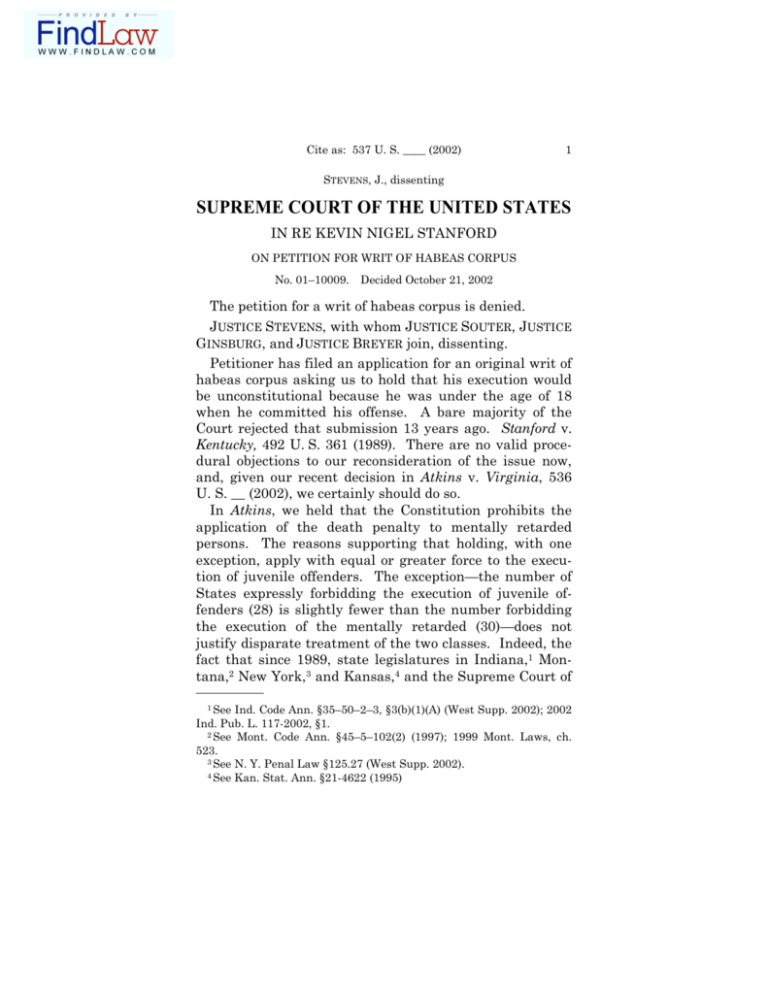
Cite as: 537 U. S. ____ (2002) 1 STEVENS, J., dissenting SUPREME COURT OF THE UNITED STATES IN RE KEVIN NIGEL STANFORD ON PETITION FOR WRIT OF HABEAS CORPUS No. 01–10009. Decided October 21, 2002 The petition for a writ of habeas corpus is denied. JUSTICE STEVENS, with whom JUSTICE SOUTER, JUSTICE GINSBURG, and JUSTICE BREYER join, dissenting. Petitioner has filed an application for an original writ of habeas corpus asking us to hold that his execution would be unconstitutional because he was under the age of 18 when he committed his offense. A bare majority of the Court rejected that submission 13 years ago. Stanford v. Kentucky, 492 U. S. 361 (1989). There are no valid procedural objections to our reconsideration of the issue now, and, given our recent decision in Atkins v. Virginia, 536 U. S. __ (2002), we certainly should do so. In Atkins, we held that the Constitution prohibits the application of the death penalty to mentally retarded persons. The reasons supporting that holding, with one exception, apply with equal or greater force to the execution of juvenile offenders. The exception—the number of States expressly forbidding the execution of juvenile offenders (28) is slightly fewer than the number forbidding the execution of the mentally retarded (30)—does not justify disparate treatment of the two classes. Indeed, the fact that since 1989, state legislatures in Indiana,1 Montana,2 New York,3 and Kansas,4 and the Supreme Court of —————— 1 See Ind. Code Ann. §35–50–2–3, §3(b)(1)(A) (West Supp. 2002); 2002 Ind. Pub. L. 117-2002, §1. 2 See Mont. Code Ann. §45–5–102(2) (1997); 1999 Mont. Laws, ch. 523. 3 See N. Y. Penal Law §125.27 (West Supp. 2002). 4 See Kan. Stat. Ann. §21-4622 (1995) 2 IN RE STANFORD STEVENS, J., dissenting the State of Washington5 have all forbidden the execution of persons who were under 18 at the time of their offenses minimizes the significance of that exception. Rather than repeating the reasoning in our opinion in Atkins, I think it appropriate to quote the following comments from Justice Brennan’s dissenting opinion in Stanford v. Kentucky, 492 U. S., at 394–396 which I joined in 1989: “Proportionality analysis requires that we compare ‘the gravity of the offense,’ understood to include not only the injury caused, but also the defendant’s culpability, with ‘the harshness of the penalty.’ Solem [v. Helm, 463 U. S. 277, 292 (1983)]. In my view, juveniles so generally lack the degree of responsibility for their crimes that is a predicate for the constitutional imposition of the death penalty that the Eighth Amendment forbids that they receive that punishment. “Legislative determinations distinguishing juveniles from adults abound. These age-based classifications reveal much about how our society regards juveniles as a class, and about societal beliefs regarding adolescent levels of responsibility. See Thompson [v. Oklahoma, 487 U. S. 815, 823–825 (1988) (plurality opinion)]. “The participation of juveniles in a substantial number of activities open to adults is either barred completely or significantly restricted by legislation. All States but two have a uniform age of majority, and have set that age at 18 or above. . . . No State has lowered its voting age below 18. . . . Nor does any —————— 5 See State v. Furman, 122 Wash. 2d 440, 459, 858 P. 2d 1092, 1103 (1993). Cite as: 537 U. S. ____ (2002) 3 STEVENS, J., dissenting State permit a person under 18 to serve on a jury. . . . Only four States ever permit persons below 18 to marry without parental consent. . . . Thirty-seven States have specific enactments requiring that a patient have attained 18 before she may validly consent to medical treatment. . . . Thirty-four States require parental consent before a person below 18 may drive a motor car. . . . Legislation in 42 States prohibits those under 18 from purchasing pornographic materials. . . . Where gambling is legal, adolescents under 18 are generally not permitted to participate in it, in some or all of its forms. . . . In these and a host of other ways, minors are treated differently from adults in our laws, which reflects the simple truth derived from communal experience that juveniles as a class have not the level of maturation and responsibility that we presume in adults and consider desirable for full participation in the rights and duties of modern life. “ ‘The reasons why juveniles are not trusted with the privileges and responsibilities of an adult also explain why their irresponsible conduct is not as morally reprehensible as that of an adult.’ Thompson, supra, at 835 (plurality opinion). Adolescents ‘are more vulnerable, more impulsive, and less self-disciplined than adults,’ and are without the same ‘capacity to control their conduct and to think in long-range terms.’ Twentieth Century Fund Task Force on Sentencing Policy Toward Young Offenders, Confronting Youth Crime 7 (1978) (hereafter Task Force). They are particularly impressionable and subject to peer pressure, see Eddings v. Oklahoma, 455 U. S. 104, 115 (1982), and prone to ‘experiment, risk-taking and bravado,’ Task Force 3. They lack ‘experience, perspective, and judgment.’ Bellotti v. Baird, 443 U. S. 622, 635 (1979). See generally Thompson, supra, at 835–836, n. 43; 4 IN RE STANFORD STEVENS, J., dissenting Brief for American Society for Adolescent Psychiatry et al. as Amici Curiae (reviewing scientific evidence). Moreover, the very paternalism that our society shows toward youths and the dependency it forces upon them mean that society bears a responsibility for the actions of juveniles that it does not for the actions of adults who are at least theoretically free to make their own choices: ‘youth crime . . . is not exclusively the offender’s fault; offenses by the young represent a failure of family, school, and the social system, which share responsibility for the development of America’s youth.’ Task Force 7. “To be sure, the development of cognitive and reasoning abilities and of empathy, the acquisition of experience upon which these abilities operate and upon which the capacity to make sound value judgments depends, and in general the process of maturation into a self-directed individual fully responsible for his or her actions, occur by degrees. See, e. g., G. Manaster, Adolescent Development and the Life Tasks (1977). But the factors discussed above indicate that 18 is the dividing line that society has generally drawn, the point at which it is thought reasonable to assume that persons have an ability to make, and a duty to bear responsibility for their, judgments. Insofar as age 18 is a necessarily arbitrary social choice as a point at which to acknowledge a person’s maturity and responsibility, given the different developmental rates of individuals, it is in fact ‘a conservative estimate of the dividing line between adolescence and adulthood. Many of the psychological and emotional changes that an adolescent experiences in maturing do not actually occur until the early 20s.’ Brief for American Society for Adolescent Psychiatry et al. as Amici Curiae 4 (citing social scientific studies).” Cite as: 537 U. S. ____ (2002) 5 STEVENS, J., dissenting Today, Justice Brennan’s observations are just as forceful and correct as they were in 1989. But even if we were not convinced in 1989, we should be all the more convinced today. Indeed, when determining what legal obligations and responsibilities juveniles will be allowed to take on, the trend tends to require individuals to be older, rather than younger. See, e.g., U. S. National Survey of State Laws 418–422; 478–488 (R. Leiter ed., 4th ed. 2001) (reporting that, without exception, all States now require one to be at least 18 in order to marry without parental consent and that all States now require one to be at least 18 to be the age of majority if unmarried). Neuroscientific evidence of the last few years has revealed that adolescent brains are not fully developed, which often leads to erratic behaviors and thought processes in that age group. See Supplemental Brief for Petitioner 3–5. Scientific advances such as the use of functional magnetic resonance imaging—MRI scans—have provided valuable data that serve to make the case even stronger that adolescents “ ‘are more vulnerable, more impulsive, and less self-disciplined than adults.’ ” Stanford, 492 U. S., at 395. Moreover, in the last 13 years, a national consensus has developed that juvenile offenders should not be executed. No state has lowered the age of eligibility to either 16 or 17 since our decision in 1989. See V. Streib, The Juvenile Death Penalty Today: Death Sentences and Executions for Juvenile Crimes, January 1, 1973–September 30, 2002, 7 (updated Oct. 9, 2002) (unpublished manuscript) (available in Clerk of Court’s case file). In fact, as I mentioned above, the movement is in exactly the opposite direction. Although it is clear that the treatment of this issue by the legislatures has led to a trend in only one direction—toward abolition of the death penalty for juvenile offenders—the fact that the legislatures are paying attention to this issue is remarkable. Juvenile offenders make up only 2% of the total population of death row and about that 6 IN RE STANFORD STEVENS, J., dissenting same percentage of the executions that are carried out. See id., at 13, 4. As a result of such small numbers, one might expect that this issue would draw little public attention and even less interest from the state legislatures. But the legislatures have acted, and those actions are uniformly against the execution of those who were under 18 when they committed their offense. This uniform treatment makes sense, too, when one considers its consistency with widely held views on the subject: The majority of Americans, when asked in 2001, indicated that the death penalty should not apply to juvenile offenders. See, e.g., T. Smith, Public Opinion of the Death Penalty for Youths, National Opinion Research Center, University of Chicago 2,6 (Dec. 2001) (unpublished manuscript) (available in Clerk of Court’s case file). All of this leads me to conclude that offenses committed by juveniles under the age of 18 do not merit the death penalty. The practice of executing such offenders is a relic of the past and is inconsistent with evolving standards of decency in a civilized society. We should put an end to this shameful practice. I would set the application for an original writ for argument and respectfully dissent from the Court’s refusal to do so.

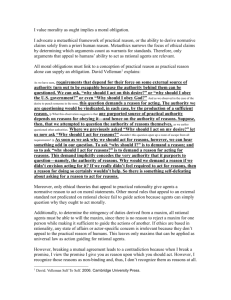
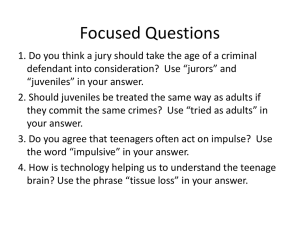




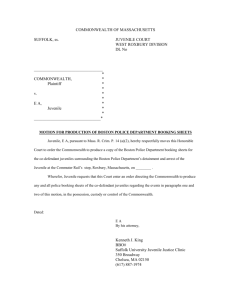
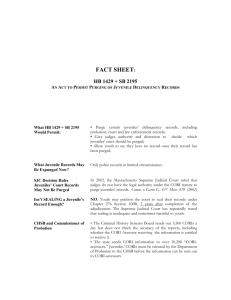
![ROPER v. SIMMONS, 543 U.S. 551 [March 1, 2005] Justice](http://s3.studylib.net/store/data/008271001_1-46b28255dd222a4dd5249abb83ed57b7-300x300.png)
